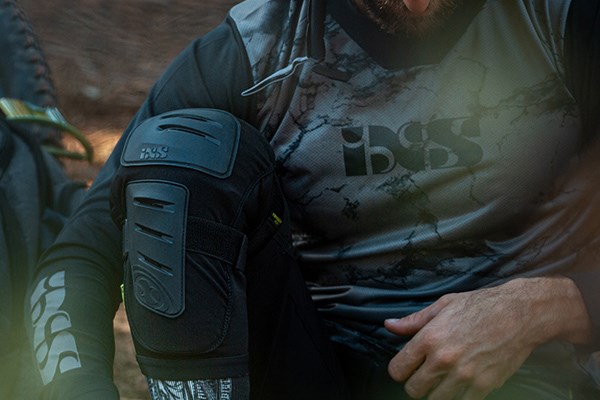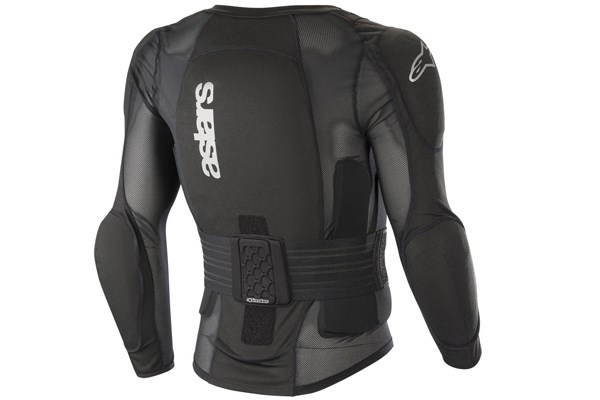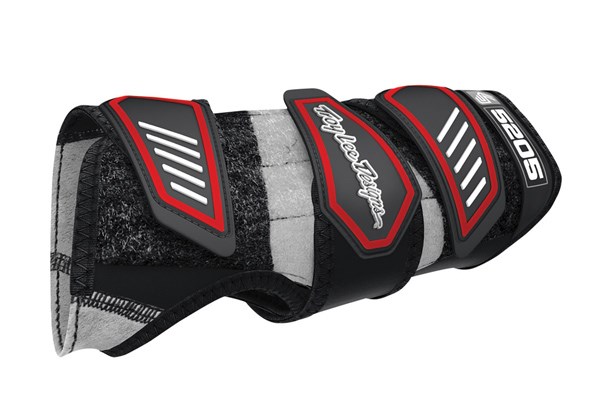Falling off is all part of the fun when you are mountain biking, but of course, you don’t want to hurt yourself, so wearing some protection is always a good idea. MTB pads offer protection to the parts of your body that aren’t covered by your helmet and gloves. In this guide we’ll look at each of the different types of protection, what it’s good for and what to look for.
Types of Protective Equipment
Knee pads
Knee pads are the most popular type of body protection because your knees are generally the first bit of your body to hit the ground in a crash. Worn by trail riders as well as gravity racers and free riders cycling knee pads are available in a range of styles that balance protection with freedom of movement. Getting the right fit is important so be sure to check the size guide before you buy.

Lightweight knee pads are best for trail riding as they are the easiest to pedal in. They will protect your knees from abrasions and small bumps. Heavy-duty pads with a hard shell or shock absorbing layer offer better protection but they may feel less comfortable on the climbs. Shock absorbing materials like D3O enable good freedom of movement with high levels of protection.
What to look for in knee pads:
- Shock absorbing pad and abrasion resistant outer
- Silicone gripers and/or straps to help keep the pad in place
- Longer pads offer additional shin protection
- Ventilation elements to help you stay cool as you ride
- Size options that fit your legs measurements well
Elbow pads
While less popular than knee pads, elbow pads are a good choice for rides where you will be doing a lot of descending or when the terrain is particularly challenging. It’s worth slipping on elbow pads for bike park sessions and alpine summer holidays as well as muddy enduro races.

Just like knee pads, elbow pads offer different levels of protection. Heavy duty pads with a hard shell and thick shock absorbing layer offer the best impact protection. Lightweight pads offer good protection from abrasions and are more comfortable on long rides. Fit is important so be sure to check the size guide before you buy.
What to look for in elbow pads:
- Shock absorbing pad and abrasion resistant layer
- Silicone gripers to help keep the pad in place
- Straps on heavy duty pads for extra security
- Ventilation elements to help you stay cool as you ride
- Size options that fit your arms measurements well
Body Armour
Body Armour offers comprehensive overall protection for the upper and lower body. Designed for gravity racing and freeriding, body armour is too cumbersome to do much pedalling in, so is usually reserved for days where there is an uplift. Body armour is available for the top or the bottom half of the body and will sometimes include elbow or knee pads. Ventilation for temperature management is an important consideration as body armour can become uncomfortably hot.

As with all protective equipment it’s important to balance levels of protection with freedom of movement. Back protection is the most important aspect of body armour and is provided in a vest along with chest protection. Body armour shirts also include shoulder guards and sometimes elbow pads. For the lower body shorts offer hip protection while pants also include knee pads. While most MTB pads are unisex, women's specific body armour is designed to offer a comfortable fit for female body shapes.
What to look for in body armour:
- Hard shell and/or shock absorbing pads
- Protection has been CE tested and certified
- Articulated construction
- Stretch fabrics for a better fit
- Ventilation elements
Neck Supports
Neck supports or neck braces are designed to work with full face helmets to prevent hyper extension of the neck in a crash. Mostly used by downhill racers and freeriders neck supports are more comfortable than they look. Neck braces should only be worn with full face helmets.

Wrist, Shoulder and Ankle Supports
Supports and braces for wrists, shoulders and ankles are designed to help rehabilitation from injury. Injured joints can take time to regain strength and these supports allow you to ride while you are transitioning back to full fitness. They can also help reduce the chances of exacerbating the injury.





